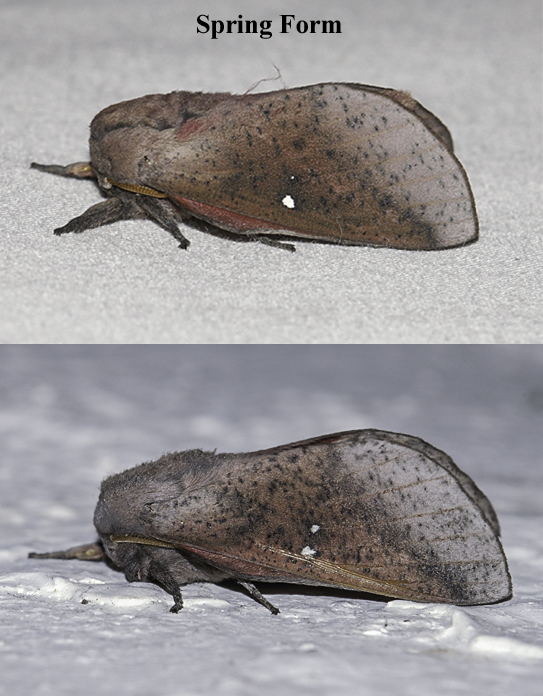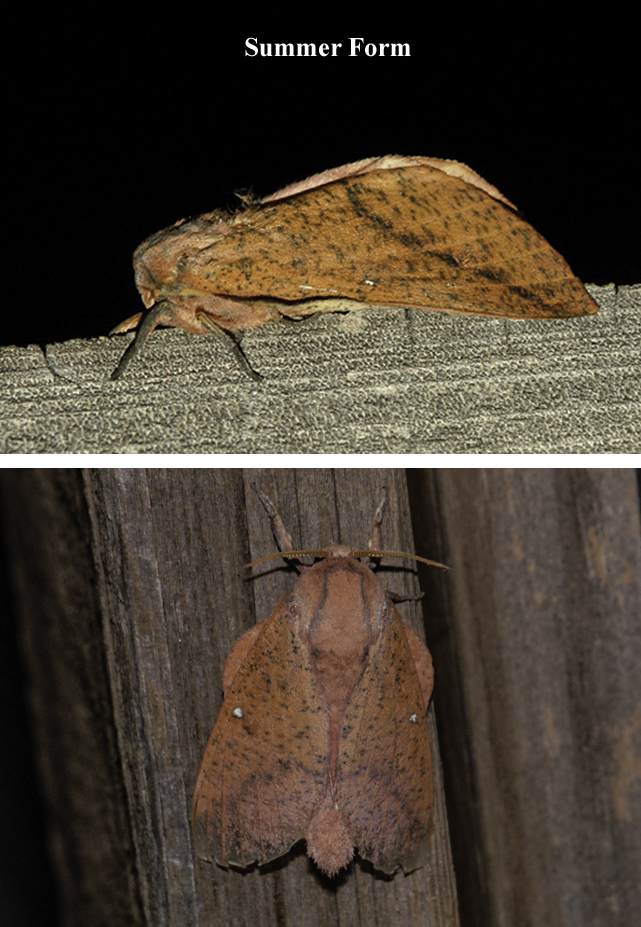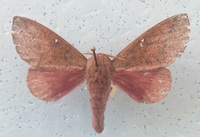Identification
Field Guide Descriptions: Covell (1984); Beadle and Leckie (2012; as Syssphinx bicolor) Online Resources: MPG , BugGuide , iNaturalist , Google , BAMONA , GBIF , BOLD Technical Description, Adults: Forbes (1923), Ferguson (1971), Tuskes et al. (1996)Technical Description, Immature Stages: Forbes (1923), Ferguson (1971), Covell (1984), Tuskes et al. (1996), Wagner (2005)
Adult Markings: Both Forbes (1923) and Ferguson (1971) noted that Sphingicampa and Anisota species may be hard to tell apart. This is particularly true for the summer forms of S. bicolor, which resemble both A. stigma and senatoria in possessing a reddish or yellowish ground color, dark speckling, and a diffuse postmedian separating a darker medial area from a paler submarginal area. Where the hindwings are visible, Sphingicampa species have a basal patch of crimson or rose that strongly contrasts with the color of the forewing; in Anisota species, both sets of wings are similar in color. In photographs of living individuals, however, the hindwings may not be clearly visible and other characters need to be used. In a lateral view, the length of the inner margin (the edge next to the back when the wings are folded) is about the length or slightly longer than the outer margin (the edge located at the posterior end when the wings are folded); in Anisota, the inner margin is noticeably shorter (Forbes, 1923). The white discal spots are also often doubled in Sphingicampa but always single in Anisota; some individuals of Sphingicampa, however, show only a single spot or none at all. Finally, many bicolor (and some bisecta) show two dark streaks on the thorax, which is typically unmarked in Anisota species. The two Sphingicampas in our area also resemble one another but can be distinguished by the postmedian line: in S. bicolor, the postmedian is brown and fairly dffuse and terminates at the edge of the wing well in front of the apex; in S. bisecta, the postmedian is a finer, darker line that terminates close to or at the apex. S. bisecta also has a similar fine, dark antemedian line which is usually missing in S. bicolor.
Wingspan: 60-75 mm (Forbes, 1923)
Adult ID Requirements: Identifiable from good quality photos of unworn specimens.
Immatures and Development: Larvae of the two species of Sphingicampa are similar in color, spination, and identical in terms of host plants. Mature instar bicolor can be distinguished based on their possession of red tipped thoracic and abdominal horns, which are green in bisecta, and by a pronounced red-and-white lateral stripe, which is black-and-white in bisecta (Tuskes et al., 1996; Wagner, 2005). Ferguson (1971), however, observed a significant amount of individual variation in these traits. Pupation occurs in the soil.
Larvae ID Requirements: Identifiable from good quality photos, especially where associated with known host plants.

 »
»




 »
»


